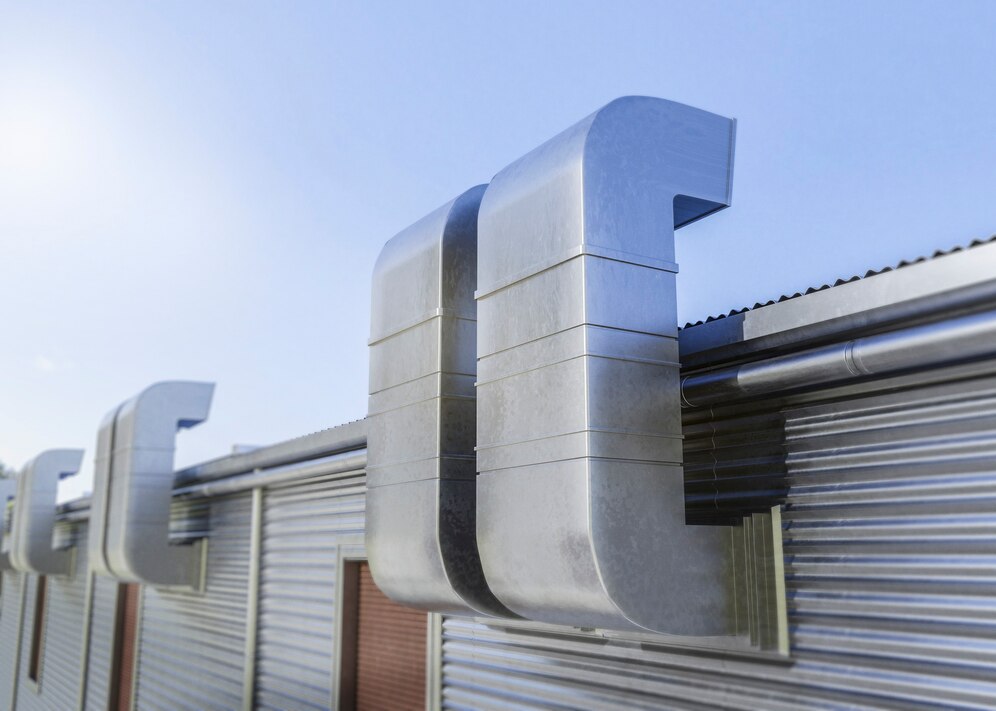Good roof ventilation plays an important role in maintaining a comfortable and healthy home. Proper airflow prevents heat and moisture buildup, which can lead to various issues. With the right ventilation, you can keep indoor temperatures in check, making your house more pleasant to live in.
Without adequate ventilation, moisture can accumulate in your attic, leading to mold growth and structural damage. Efficient roof ventilation helps safeguard against these problems, promoting a safer living environment. It also cuts down on energy costs by reducing the need for constant heating and cooling.
When considering roof ventilation, it’s crucial to understand the different options available and how they work. By exploring these aspects, you can make informed decisions that will benefit your home in the long run, ensuring it remains in good condition and comfortable year-round.
Importance of Proper Roof Ventilation
Proper roof ventilation is essential for maintaining a comfortable temperature in your home. Hot air that accumulates in the attic can make your entire house warmer, forcing your air conditioning to work harder and increasing energy bills. By allowing hot air to escape, ventilation systems keep your home cooler and help save on electricity costs.
Good ventilation also prevents moisture buildup, which can lead to serious issues like mold and mildew. When humid air gets trapped in the attic, it can cause wood rot and weaken roofing structures. Keeping moisture at bay ensures a healthier environment for your family and protects your home from costly damages.
Ventilation extends the lifespan of your roof by reducing the strain caused by heat and moisture. Overheated attics can cause roofing materials to deteriorate faster, leading to more frequent repairs or replacements. Efficient ventilation limits this wear and tear, resulting in a sturdier roof that lasts longer without major issues.
Common Types of Roof Ventilation
Different types of roof ventilation systems are designed to handle varying needs. Ridge vents and soffit vents work together to create a natural airflow. Ridge vents are placed at the peak of the roof, allowing hot air to escape, while soffit vents at the edges pull in cooler air from outside.
For homes with different shapes and styles, gable vents or box vents may be more suitable. Gable vents are located on the roof’s gable ends and facilitate airflow through openings at opposite ends of the attic. Box vents, on the other hand, are installed over openings cut into the roof deck and work best for smaller attics.
In situations where natural ventilation isn’t enough, powered attic fans provide additional support. These fans actively draw air out of the attic space, making them a great option for homes needing extra ventilation help. Selecting the right type of ventilation depends on factors like house design, climate, and personal preferences. Each type has its strengths, so understanding their functions can help in choosing the ideal solution for your home.
Tips for Effective Roof Ventilation
Achieving proper roof ventilation requires balancing intake and exhaust. This balance ensures fresh air circulates effectively, while stale, moist air is pushed out. If intake exceeds exhaust, moisture can become trapped and cause problems. On the other hand, too much exhaust can pull in unwanted drafts. Maintaining this balance is crucial for optimal airflow.
Routine inspections and maintenance are key to keeping your ventilation system running smoothly. Checking for blockages in vents and ensuring seals are tight can prevent inefficiencies. Look out for issues like bird nests or debris that might obstruct airflow. Regular upkeep helps avoid costly repairs and extends the life of your roof.
Sometimes, even with regular maintenance, your ventilation system may not be efficient enough. If you notice increasing energy bills or persistent moisture issues, it might be time to upgrade your system. Signs like these indicate your home could benefit from improved ventilation solutions. Consider consulting experts to assess your current setup and recommend enhancements.
Benefits of Professional Installation
A professional installer brings expertise in selecting the best ventilation systems for your home. They consider factors like roof design, climate, and personal preferences to provide customized solutions. With their help, you can be sure your system fits your needs perfectly.
Professional installation also guarantees work is done safely and accurately. Avoiding common DIY mistakes means your system will perform as intended, offering better protection and efficiency. Professionals have the skills and tools to ensure installations meet industry standards, giving you peace of mind.
In the long run, professional installation leads to significant savings. A properly installed system reduces energy bills by optimizing home temperature. This means less wear on your HVAC system and a longer-lasting roof, saving money on repairs and replacements over time. Having experts handle the job ensures lasting benefits for your home.
Conclusion
Proper roof ventilation is essential for maintaining a comfortable and efficient home. By allowing air to flow freely, ventilation systems help regulate temperature, prevent moisture damage, and extend the life of your roof. Choosing the right type of ventilation and ensuring it is installed correctly can have a lasting impact on your home’s well-being.
If you’re unsure about the best ventilation system for your home or need an upgrade, consider reaching out for professional advice. With expert guidance, you’ll make informed decisions that ensure your roof remains in top condition, protecting your home and family for years.
To take the next step in improving your roof’s ventilation, contact James Kate Roofing & Sola, the best roofing company. Our experienced team is ready to assist you in choosing and installing the ideal system for your home. Enhance your roof’s efficiency and longevity by reaching out to us today.

